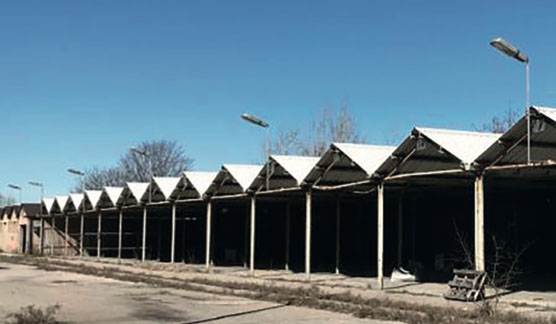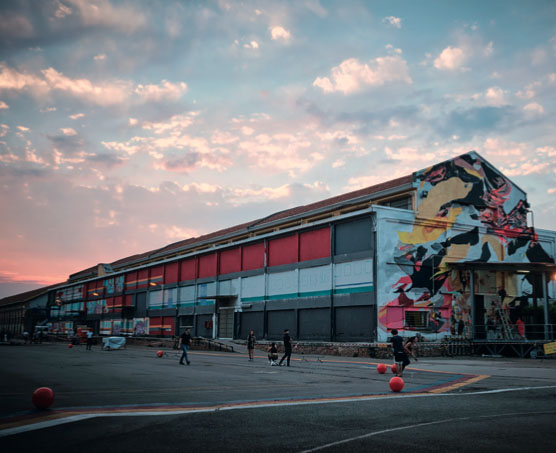Entering Via Casarini 19 in Bologna, in the Porto-Saragozza district, you can still walk over the tracks of the former Ravone yard which, since 1925, served as the main freight yard for the city. From 1941, following the construction of the more spacious San Donato Station, it was used only for the local unloading of products and food shipments, being adjacent to the Arcoveggio fruit and vegetable market. The Ravone, as it is called by the inhabitants of the Quadrilateral, was at its busiest in the 1970s, only to gradually fall into disuse in the 1980s with the increase in wheeled traffic. The railway history of the capital of Emilia-Romagna has always been characterized by discontinuous solutions due to lack of functionality, although the position of the city makes it a strategic hub, a junction between the Adriatic and the Mediterranean network. Like its host city, the former Ravone depot is located in a crucial area, west of the central station, northwest of the historic centre and adjacent to Prati di Caprara.

Yet, the space in Via Casarini, owned by the FS Italiane group and comprising a total of six buildings for a total area of about 40 thousand square metres, half of which are uncovered, has remained unused for more than forty years, highlighting the problem of the recovery of railway areas and the abandonment of the industrial city for unproductivity. This is until the spring of 2019 when, with a view to real estate development for urban regeneration, DumBO − Distretto Urbano Multifunzionale Bologna (Multifunctional Urban District Bologna) − is inaugurated: a place to promote associations through artistic, cultural and sports activities to encourage social experimentation and convergence between different realities. The project has radically transformed this district, promoting urban art interventions to return the space to a creative and gathering role. As already happens in many European cities, DumBO follows a logic of citizen participation and collaboration between public and private entities. In fact, the project, a pioneer in the Bolognese territory, is the result of an initiative of the Open Group cooperative, in collaboration with Eventeria, and taking advantage of the advice of the Urban Innovation Foundation, three very important players in the city’s panorama of innovation for culture and social issues. Before the pandemic, DumBO thus distinguished itself as a city hub, organizing festivals, concerts, exhibitions, and screenings with an eye always on social issues of current importance. It welcomed The Climate Route group with their climate aperitif aimed at raising awareness and discussion of the consequences of climate change. Or Hicon, the Italian conference on innovation, technological development and digital technology, which dealt with sustainable tourism. The photography exhibition Genti d’Africa (People of Africa), organized by the Ponte Noire group, which has been working since 1984 to tell the story of the continent through the voices and eyes of its inhabitants, and BOOMing Contemporary Art. Show, hosted in virtual reality to give visibility to the NFT art form.

During the pandemic months, DumBO reinvented itself by transforming itself into the region's emergency health centre. In short, it can be said that a lot of water has passed under the bridge and, in the case of the former Ravone depot, this saying has a literal value. A toponym already documented in the 10th century, the Ravone torrent comes to life in Parco Cavaioni and from there it flows into the Reno, descending as far as Prati di Caprara and via del Chiù, thus passing through the western boundary of the area. Through the course of the stream first, then the tracks, and now thanks to musical notes and spray cans, the space in Via Casarini has accompanied the Bolognese in its versatility. DumBO remains a virtuous example of urban redesign, hopefully a trailblazer for similar projects in the area, such as the countless disused barracks scattered throughout the city.

.jpg)



.png)